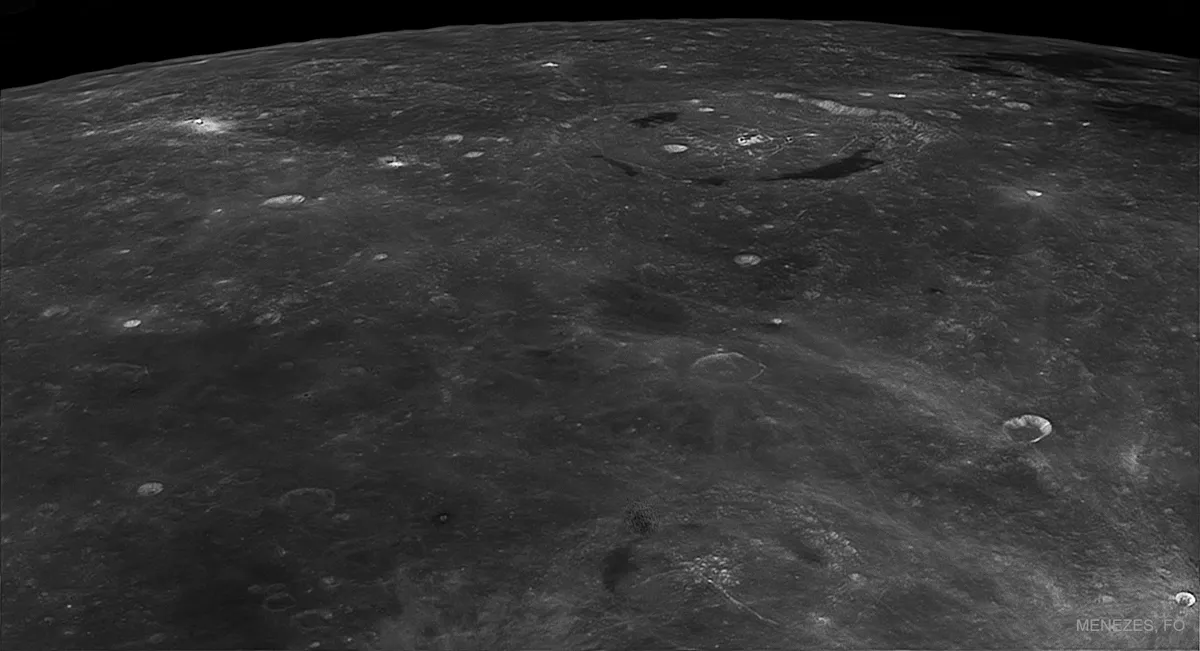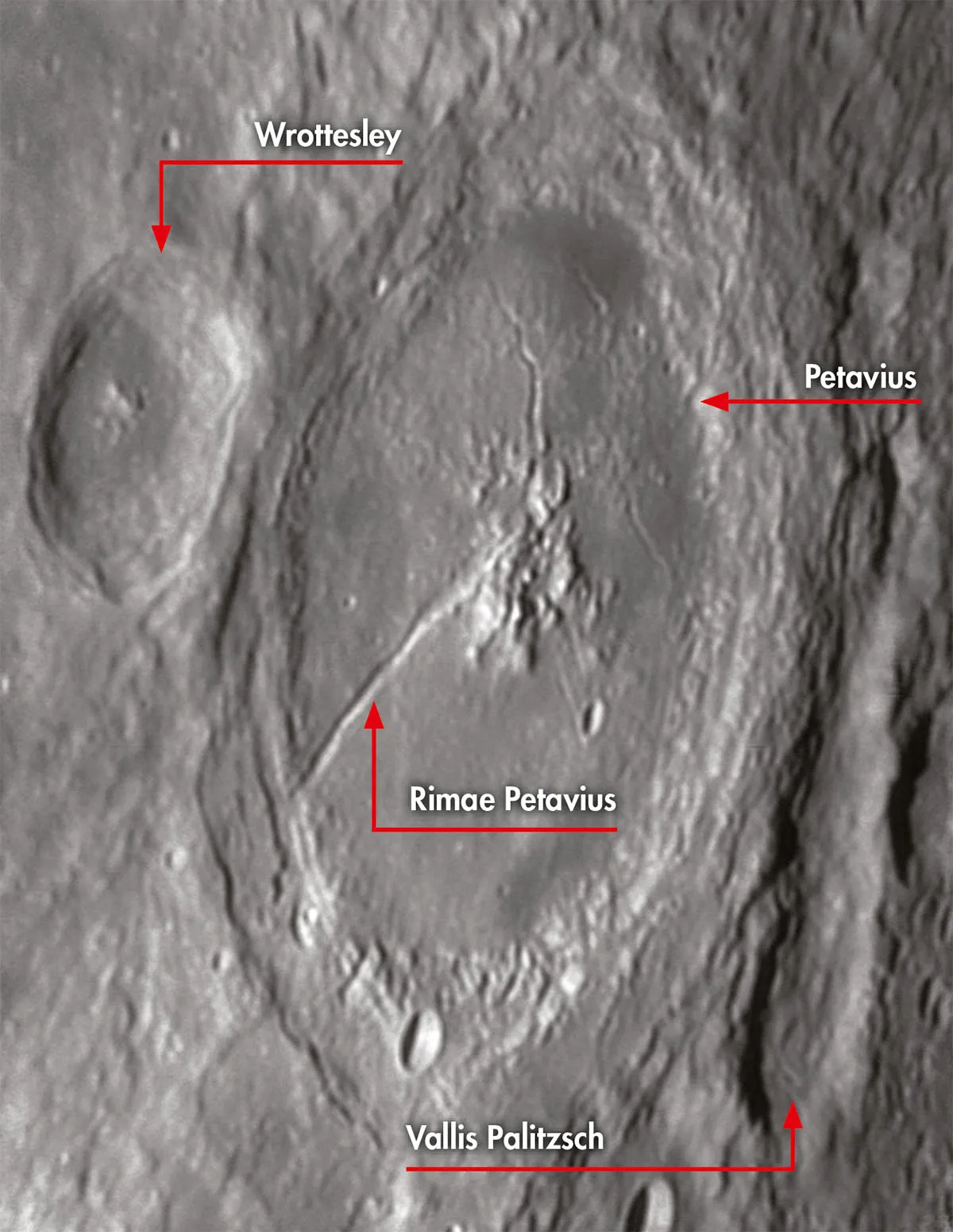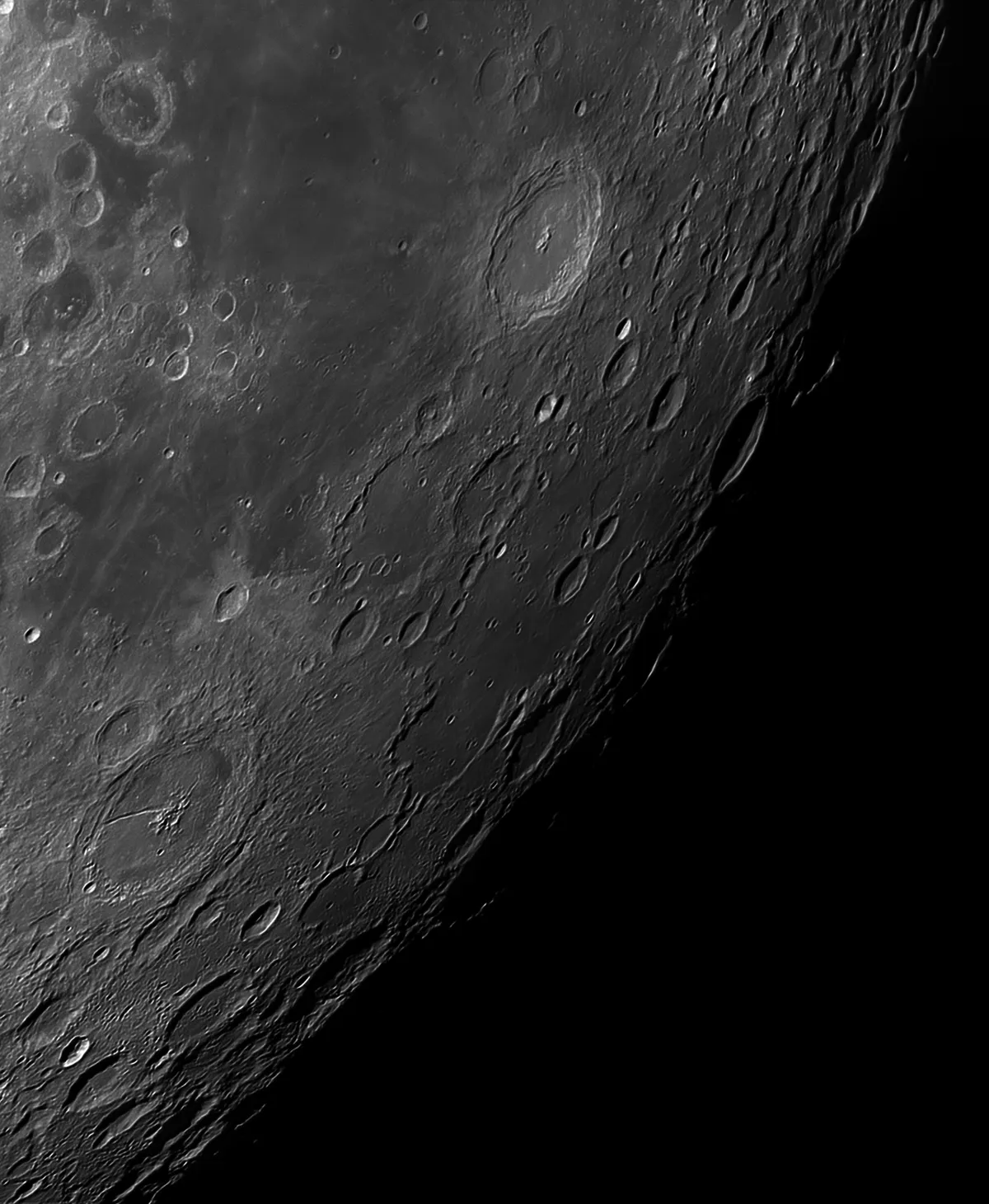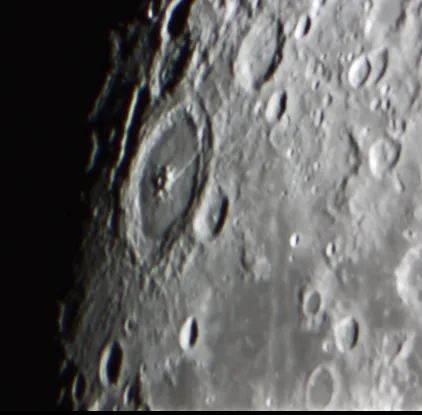Take a look at one of the most imposing formations on the Moon; the walled plain Petavius, named after the entirely unremarkable French theologian Denis Pétau (1583-1652).
It is a member of the great chain of formations southeast of the Mare Fecunditatis, almost perfectly circular, though since it is not very far from the limb it appears foreshortened into an ellipse.
Other members of the chain that are similar in size are Langrenus and Vendelinus. Langrenus is relatively unscathed, but Vendelinus has been badly damaged by later impacts.
For more on lunar observing, read our guide on how to observe the Moon or the best features on the Moon.

Petavius Crater has high, continuous walls rising in places to almost 3.5km above the markedly convex floor. I have found that the best view is obtained three days after new Moon.
The shadows retreat with surprising speed and for the rest of the lunation, until just after full Moon, Petavius is identifiable as a white oval. Its grandeur then reappears briefly before the whole region is engulfed by the lunar night.
Facts about PetaviusCrater
- Size 177km
- Age Unknown
- Location Latitude 25.3°S, longitude 60.4°E
- Recommended kit 4-inch telescope

What does Petavius Crater look like?
The wall of Petavius Crater is very wide, and is not broken anywhere, though the well-formed, 57km-wide crater Wrottesley touches its outer northwest rim. There is considerable detail in the wall, and a distinct double rim along the south and west.
The floor of the crater has been resurfaced by lava flow and contains a large, massive central mountain group, with peaks rising to 1.7km above the floor.
The group, with its multiple peaks, is so complex that it is difficult to draw accurately – try some imaging! But of even greater interest is the broad, deep rille that runs from the central mountain group to the inner wall.
A very small telescope will show it, under suitable lighting conditions. It also makes it easy to distinguish Petavius from Langrenus if you’re an inexperienced observer.
In fact it is part of a more complex rille system on the crater floor, now known officially as Rimae Petavius.

It is well known that transient lunar phenomena tend to appear in regions rich in rilles; therefore I would not have been surprised at a TLP report from Petavius.
But I was surprised to hear of one in Langrenus, reported by the French astronomer Audouin Dollfus. My expectations were very wide of the mark!
Palitzsch, outside Petavius to the east, was listed as a 40km crater on older maps. I am not sure who first realised it is the southernend of a valley that runs over 100km beside the eastern rim of Petavius.

I certainly did, in 1935, but no doubt its true nature had been appreciated much earlier. It is now officially known as Vallis Palitzsch.
Adjoining it to the south is the 83km, badly damaged crater Hase, which gives the impression that it ought to be part of the Palitzsch valley.
Petavius has a number of satellite craters. The largest of these, Petavius B, is 33km in diameter and the centre of a short ray system.
Altogether this is a fascinating area. Pay close attention to it just after the next new Moon.

